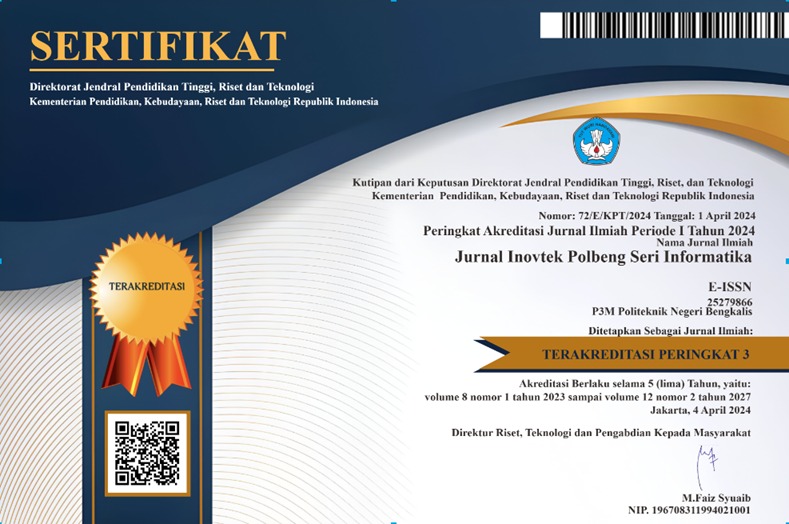Improving Butterfly Fish Image Classification Accuracy using HSV Feature Extraction and SMOTE-Based Data Balancing
DOI:
https://doi.org/10.35314/vw52nn48Keywords:
Butterfly Fish, Image Classification, HSV, SMOTE, Data ImbalanceAbstract
Class imbalance in image data can reduce the accuracy of classification models, especially when the minority class data is much smaller than the majority class. This research focuses on enhancing the classification accuracy of butterflyfish images through the application of the Synthetic Minority Over-sampling Technique (SMOTE) for data balancing, combined with the K-Nearest Neighbor (KNN) algorithm utilizing HSV-based feature extraction. The datasets were collected in two conditions, namely conditioned (controlled background and lighting) and unconditioned (varied background and natural lighting). The research stages include preprocessing, HSV feature extraction, data balancing with SMOTE, and classification using KNN with various k values (3, 5, 7, 9) and cross-validation (k-fold 5 and 10). The experimental results show that SMOTE consistently improves accuracy on both types of datasets, with the best performance at k = 3 and k-fold = 10, namely 85.32% (conditioned) and 87.59% (unconditioned). This improvement occurs because a more balanced data distribution allows the model to optimally recognize features between classes. This study proves that the integration of SMOTE and KNN is effective in overcoming class imbalance in image classification, with potential applications in the fields of digital image technology, ecosystem management, and species identification.
Downloads
Downloads
Published
Issue
Section
License
Copyright (c) 2025 INOVTEK Polbeng - Seri Informatika

This work is licensed under a Creative Commons Attribution-NonCommercial-ShareAlike 4.0 International License.














